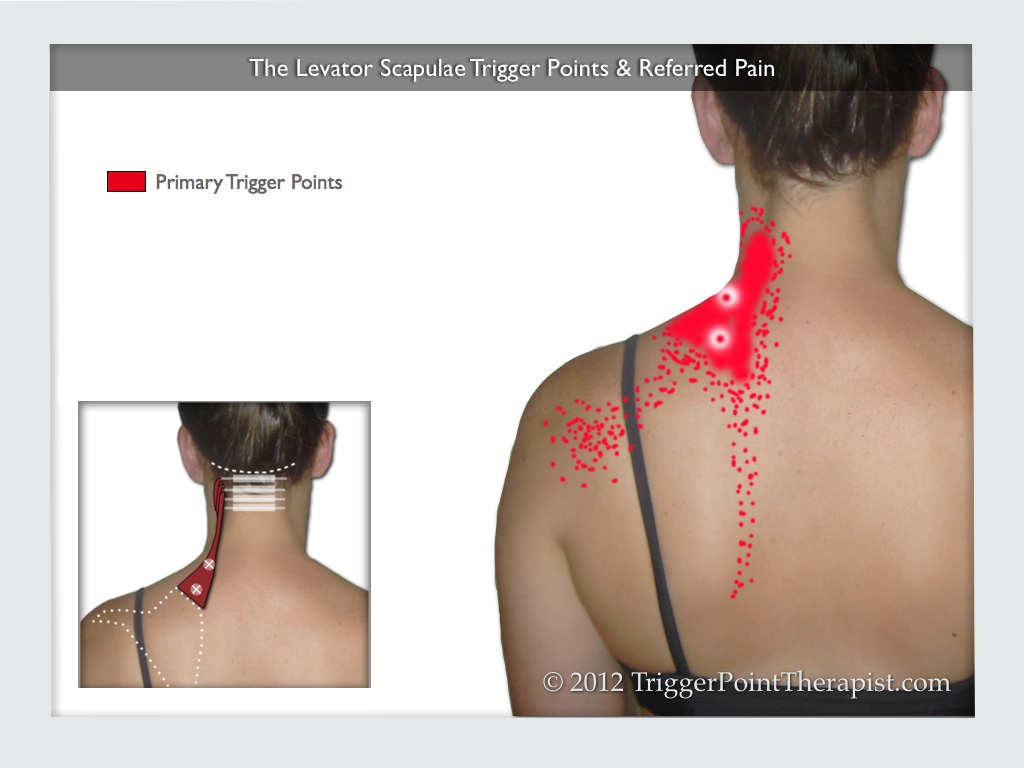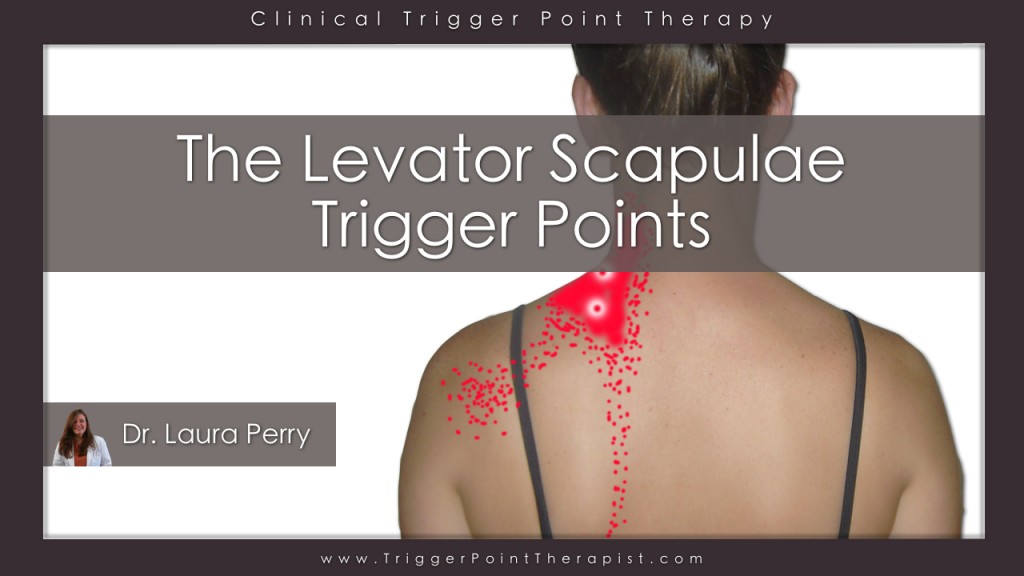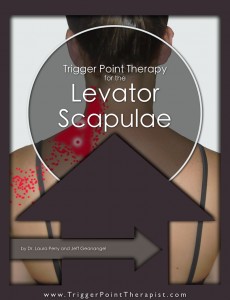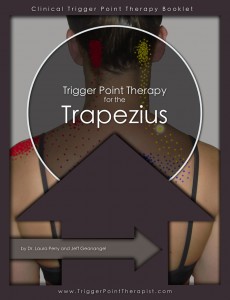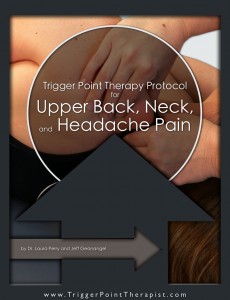You can spot levator scapulae trigger points a hundred yards away, just look for the person that is moving about like Frankenstein. Their head appears glued into position on top of their body and their movements are slow and deliberate. They turn their whole body to look at someone and move their eyes in unnatural ways to make up for the fact that they can’t turn their head.
It’s amazing to me that trigger points in this skinny little muscle can have such a profound effect on the movement of the body as a whole. I guess you just don’t realize how many body movements involve subtle movements of the head until the knee-buckling pain from active levator scapulae trigger points calls your attention to it.
The Levator Scapula Muscle
To get an overview of the anatomical and biomechanical details of the levator scapulae muscle, please see the excerpt from the Trigger Point Therapy for Levator Scapula Video Download below.
Anatomical Highlights: The muscle fibers twist along the muscle’s length so that the fibers that come from the upper cervical vertebrae attach to the lower (and medial) part of the superior angle of the scapula, and vice versa. This fiber arrangement allows the muscle contraction to not only raise the scapula, but also to rotate it outwardly so that glenoid fossa of the shoulder joint faces down.
Biomechanical Highlights: The fibers of the bilateral levator scapulae muscles act as guy-wires that stabilize the cervical spine. Unlike normal guy-wires that have a concrete foundation, the levator scapulae fibers are anchored to a moving scapula bone. This arrangement makes it easy to overload the muscle and activate its trigger points.
Levator Scapula Trigger Points & Referred Pain
The Levator Scapulae can harbor two trigger points, both of them located in the lower half of the muscle. The lower trigger point lies just above the superior angle of the scapula, and upper trigger point lies 1-3 inches above the lower trigger point. Both trigger points lie underneath (deep to) the upper trapezius muscle.
Both trigger points refer pain to the base of the neck where it meets the shoulder, and along the inside of the shoulder blade.
What Causes Levator Scapula Trigger Points?
The following events and activities are likely to activate, or reactivate, trigger points in the levator scapulae:
- whiplash from an automobile accident
- sleeping on the stomach with the head turned
- chilling of the muscle during sleep from an air conditioner or ceiling fan
- working at a computer with the head turned
- holding a phone between the shoulder and ear
- carrying a heavy bag with a shoulder strap
- use of crutches that are too tall and elevate the shoulder
- emotional and mental stress
- the common head-forward posture puts this muscle under continuous strain as it contracts to check forward neck movement.
Levator Scapula Symptoms & Findings
As a trigger point therapist, it is my job to approach physical pain as a form of communication and do my best to understand the “message” behind a particular pain complaint. I typically start this learning process by asking “how does the presence of this pain change a person’s movement and behavior?” As I described above, the pain generated from levator scapulae trigger points tends to make people move like Frankenstein, but let me explain what exactly I mean.
Over the years, I have observed the following about people with active levator scapulae trigger points:
- No Head-Forward Posture: Most people walk around with their head projected forward in front of their body, but people with levator scapulae trigger points keep their head directly above their shoulders (as seen from the side). It’s not very often that trigger point pain actually improves a person’s posture, so we should take note of this.
- An Elevated Shoulder: One of the person’s shoulder blades is typically held a little higher than the other (most easily noticed when viewed from the back). This common postural distortion can indicate the presence of both levator scapulae and upper trapezius trigger points.
- Stiff Neck The pain from these trigger points prevents the person from turning their head to either side, though turning their head towards the side of the afflicted levator scapula muscle is typically more painful. Flexing the head and neck to either side is also very painful and therefore severely limited in these people.
- Anxiety Symptoms: Many people who experience the effects of these trigger points also complain of a shortness of breathe like that associated with panic attacks. Another similar symptom is a heightened feeling of “bearing the weight of the world on one’s shoulders, which is interesting since the levator scapulae muscles act to raise the shoulder girdle.
Related Disorders
Wry Neck: If the client’s head is strongly tilted to one side, then trigger points in the sternocleidomastoid muscle may be chiefly involved.
Treatment of Levator Scapulae Trigger Points
For step-by-step instructions for recognizing, locating, and releasing these trigger points, get our Trigger Point Therapy for the Levator Scapula Video Download or our Trigger Point Therapy for the Levator Scapula Booklet for the iPad.
Click on the image below to watch an excerpt from the Levator Scapula Trigger Points video on YouTube:
Related Articles:
- The Lower Trapezius Trigger Point: A.K.A the “Bitchy” Point
- Trapezius Trigger Points Are Like Opinions…Everybody Has One
Related Instructional Videos:
